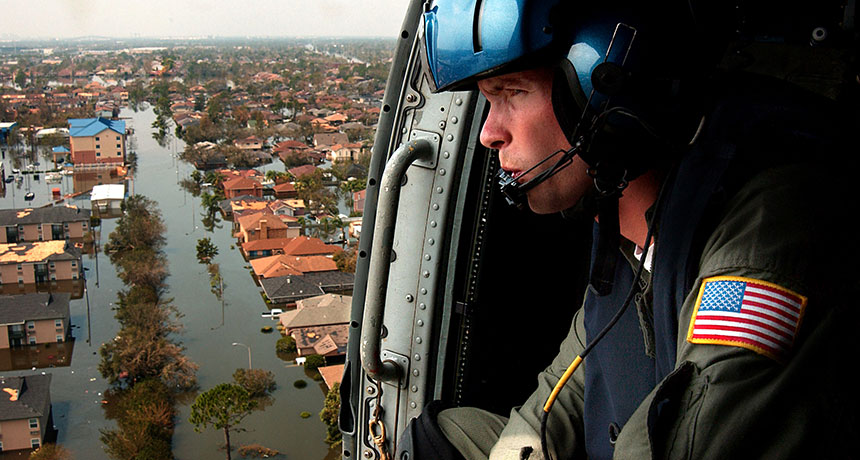Katrina’s legacy: Refining hurricane forecasting
10 years later, lessons learned could save lives in next killer storm

HOPEFUL FORECAST A decade after Hurricane Katrina devastated the Gulf Coast, the storm’s legacy of destruction continues to spur life-saving storm forecasting improvements. Katrina killed nearly 2,000 people and flooded huge swaths of New Orleans (shown).
Petty Officer 2nd Class NyxoLyno Cangemi/Wikimedia Commons
Ten years ago, the sea and sky rallied to unleash one of the worst natural disasters in U.S.